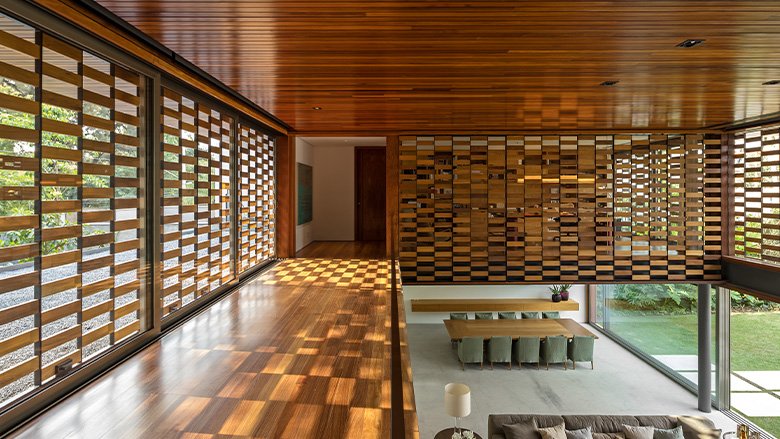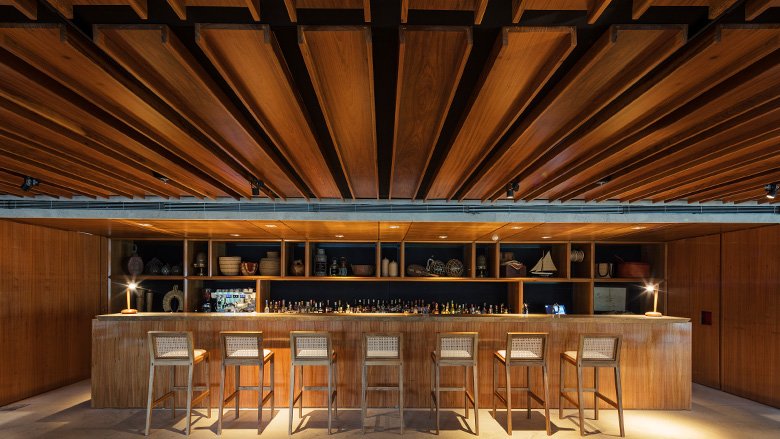The appearance and design of residential homes in North America have evolved in multiple ways over the years. Furthermore, these evolutions and changes are certainly not over, as the design of residential homes will likely be seeing multiple large changes over the next decade. Numerous factors will influence and affect these changes, including economic changes, demographic developments, slow recovery from the previous housing collapse, and affordability for younger generations.
Continue reading to learn how residential architectural designs are likely to change in the future and how Black Label is leading the charge in materials for more natural and sustainable home design.

Trends Emerging for Residential Architecture Design
AIA does a survey every year called the “AIA Home Design Trends Survey,” in which hundreds of architecture firms share data to display various trends that seem to be emerging in design. According to the 2021 survey, there are going to be several shifts in what home design is geared towards. The emerging trends displayed in this survey are further detailed below:
Home Office Space
The COVID-19 pandemic changed the world and people’s way of living in a multitude of ways, including how they work. During the pandemic and various shutdowns around the world, many companies were opting to have employees work from home, with some companies deciding to maintain this model even after things returned to normalcy. Home design is greatly displaying this change, as home offices are becoming much more popular and even necessary for some people.
Informal Living Options

It is more apparent than ever that people are moving away from older styles of living. Living rooms and dining rooms are becoming a thing of the past, as they become replaced by more open space options, dens, and great rooms.
Outdoor Spaces

Another large trend emerging is the want for more expansive and active outdoor spaces. Previously, people were happy with outdoor patios, decks, and grill areas, but this has expanded into full-on outdoor kitchens and furnished rooms bringing nature closer to people who are organic materials, such as hardwoods like Ipe, Cumaru Jatoba, and more. This idea of getting closer to nature in our building materials and practices is known as Biophilic Design. Black Label has a massive inventory of the above types of wood, as well as many other options for those who want a biophilic design as part of their next project.
Outbuildings like sheds, barns, and poolhouses have also significantly grown in popularity, with the desire for them nearly doubling from the previous year.
How Technology Will Impact Residential Architecture Design
While the survey gives a high level of insight into upcoming trends, other factors will play a large role in how homes changed over the coming years. One of the largest influences on home design will come in the form of technological innovations. This is already apparent in the heavier incorporation of smart home devices and installations. Smart home tech has already improved vastly in the couple of decades it has been around, and this trend will continue to grow as the tech gets even better.
Currently, a lot of smart home tech is easily visible upon entering the home, but this will not always be the case. Even now, smart home tech is being geared more toward innocuousness within the home. As this tech continues to shrink and become more integrated, there will quickly come a time when all of this tech will be integrated into the home itself. Instead of an Alexa or Google Home device sitting on the counter, there will come a time when people will enter and talk to the house itself essentially.
Renewable building materials: surrounded by nature.
A lot of focus has shifted to the idea of conservation and green building practices, which has altered home design in several ways.

Many homes are being built with more renewable building materials in an attempt to cut down on the massive carbon footprint of normal homes. A great example of this is how many builders are increasing their use of wood in home and other building projects. Hardwoods like Tigerwood, Garapa and other tropical lumber are significantly more renewable than plasticor engineered materials due to their reduced carbon footprint. In fact, half the weight of tropical hardwood is carbon stored during the lifecycle of the tree. When the tree has aged and finished its lifecycle, it will actually begin to release carbon back into the atmosphere. However, when an older tree is harvested to be used in construction, the carbon will be sealed into the boards and trapped forever. For those looking to use hardwoods in their next project, be sure to check out our excellent sustainable hardwood inventory here at Black Label.
Furthermore, energy efficiency is becoming a much larger consideration for those building homes. Not only does this help to reduce carbon footprint, but it also saves money for the homeowner during heating and cooling.
According to the AIA survey, 38% of architecture firms said that they expect energy-efficient designs and retrofits to become significantly more important. More homes have begun to use solar and wind power options as well and this is likely to grow over the coming years.
Tiny Homes Becoming More Popular in Residential Architecture
The overall average size of American homes has grown over the past few decades, but this has not stopped a significant amount of people from preferring downsizing. Smaller home designs and even tiny homes have gained a lot of traction over the past decade in the residential architecture world. This has led to more architects embracing this trend and working to create well-designed smaller homes and apartments. While this trend has grown among many who prefer the aesthetics and living of smaller homes, it can be partially attributed to economic difficulties and land and labor shortages.
Accessibility Options
Accessibility has been a growing trend over the past two decades, but this has significantly increased as a result of a few main factors. With a majority of the Baby Boomer generation getting older and Gen X on their way as well, accessibility is becoming a large focus of home design and remodeling. These older generations are starting to incorporate more accessibility into their current homes and newer builds to help accommodate them in the coming years. In other words, accessibility is changing from a future desire to a necessity for many families.
Black Label Has Wood Options for All of Your Future Designs

Are you an architect or designer looking for sustainable materials for your next project? Then, Black Label is here to help. We have a wide array of high-quality wood offerings that will be perfect for many of your future projects. Black Label is an industry leader when it comes to high-quality wood and we want to help you bring your designs to life through sustainable materials. If you have any questions about our products or would like to place an order, please contact us by entering your email on our website or emailing us at info@blacklabelwood.com.





